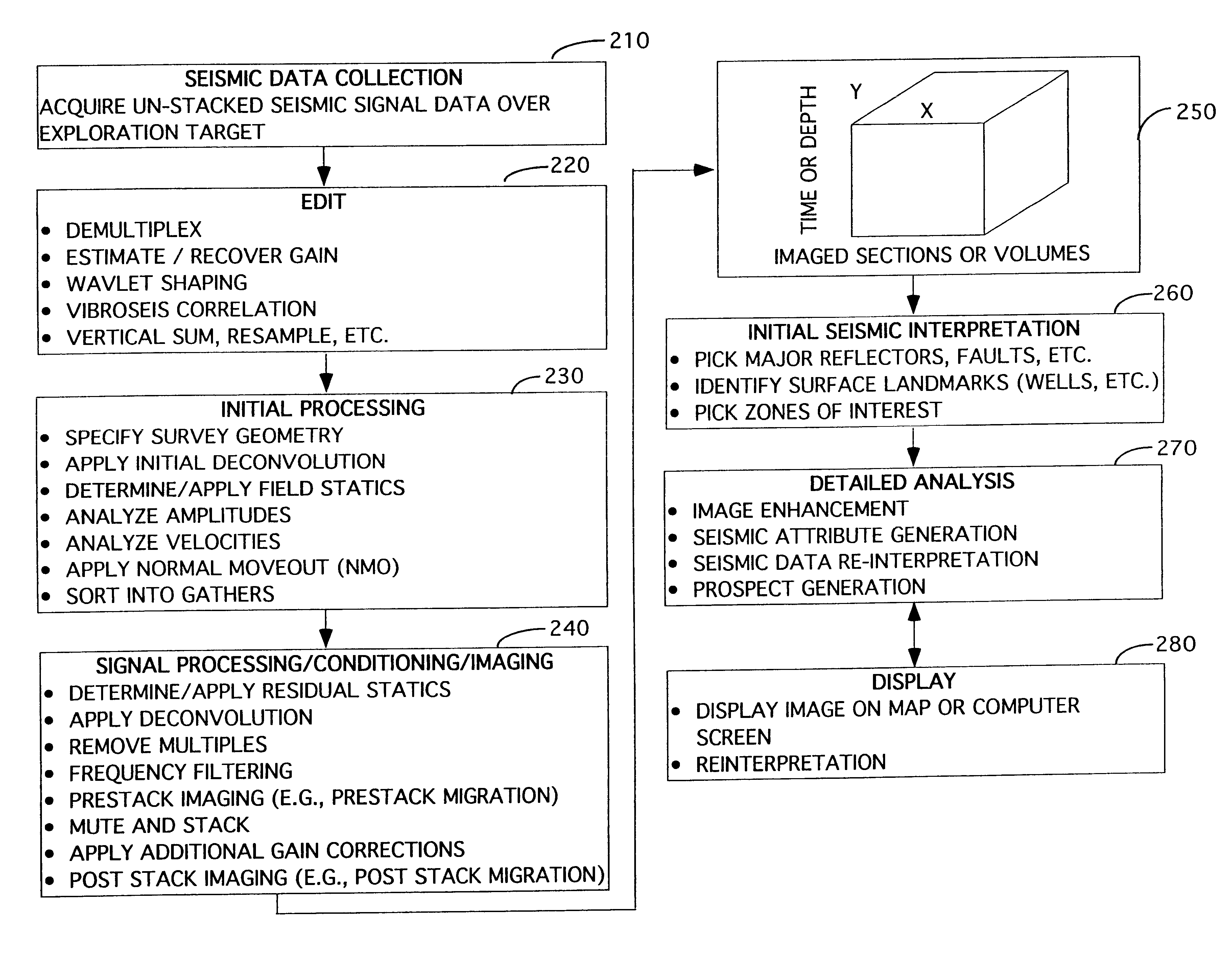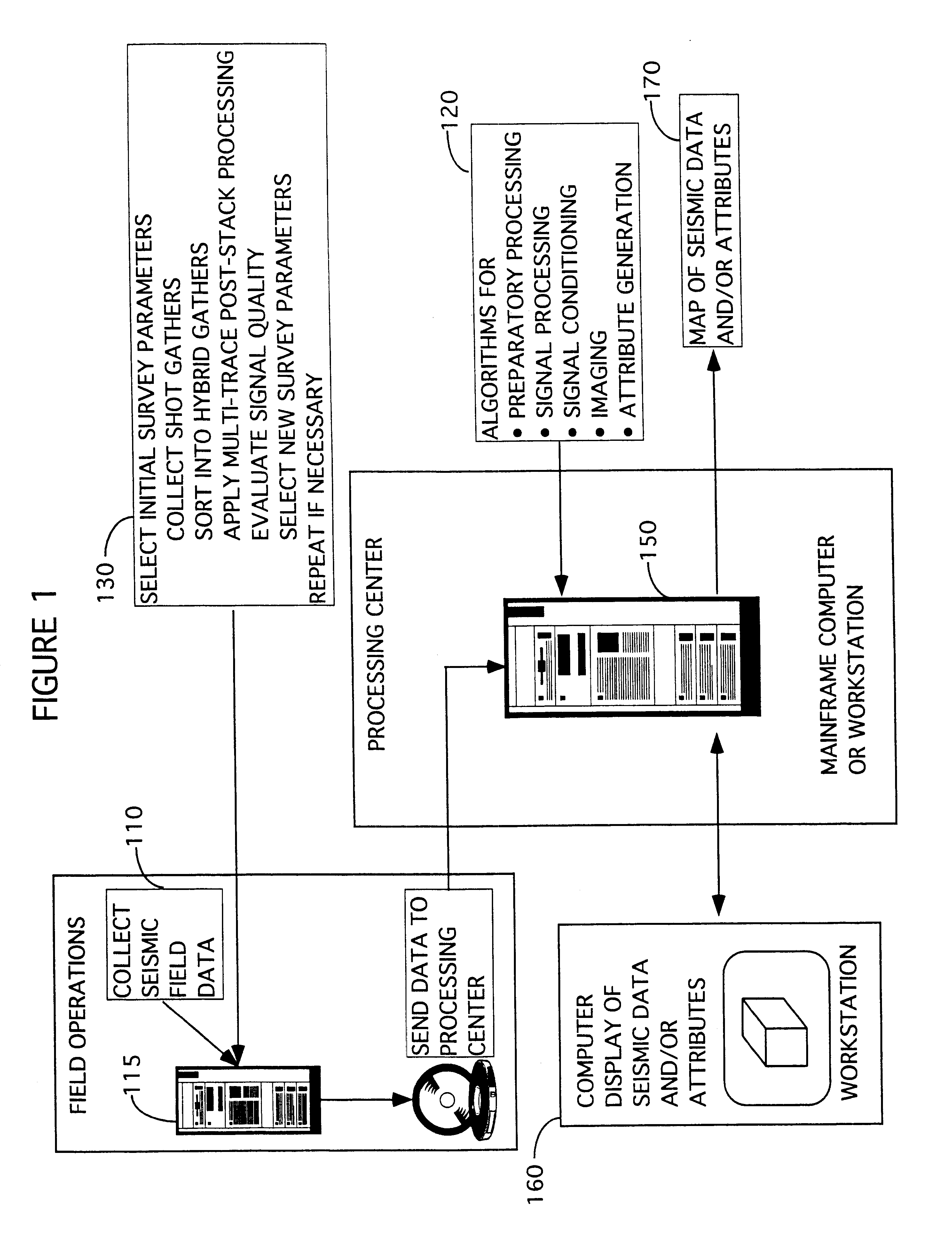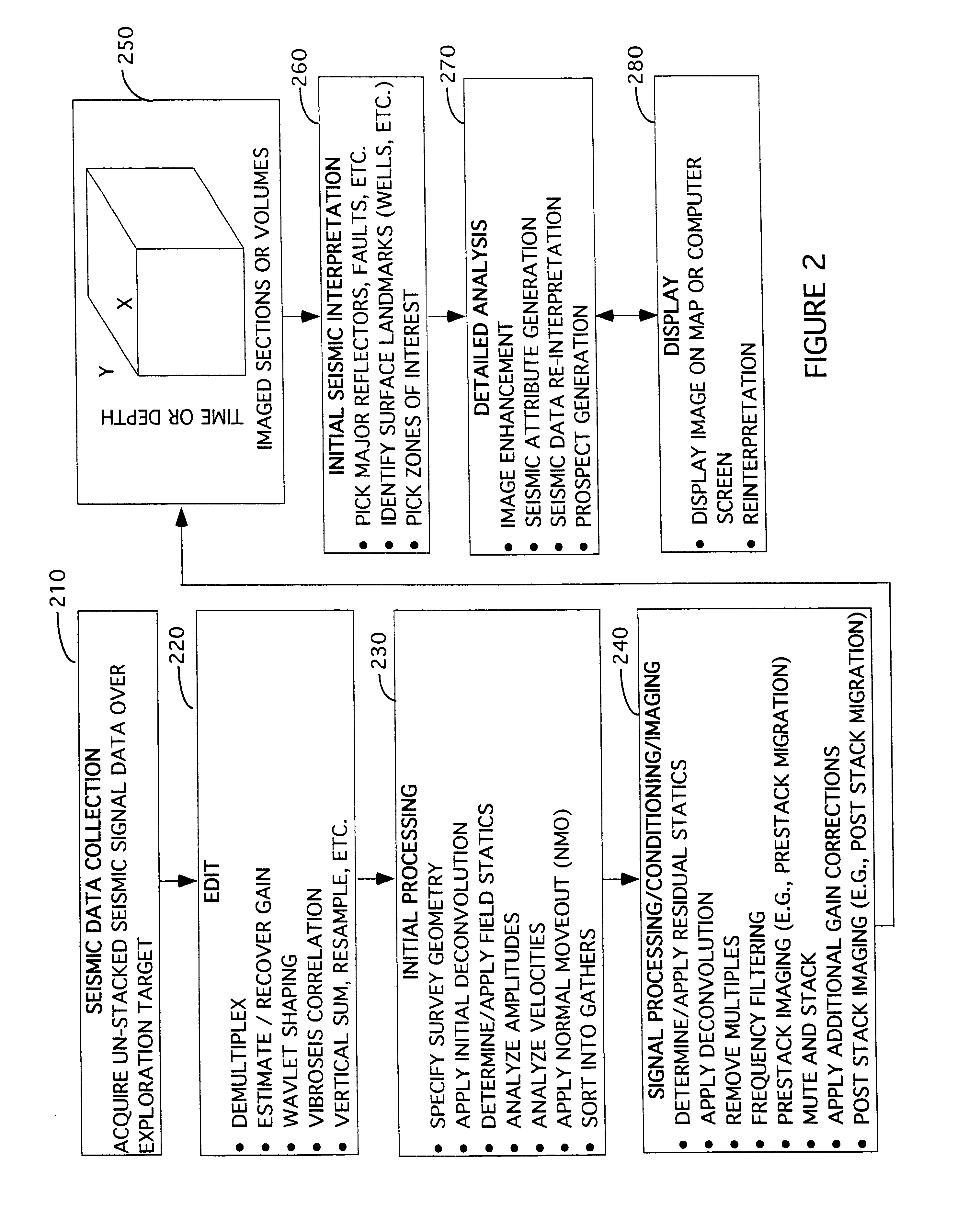Application of hybrid gathers for rapid determination of seismic acquisition parameters
a technology of hybrid gathers and seismic acquisition parameters, applied in the field of rapid determination of seismic acquisition parameters, can solve the problems of difficult identification, low field data, and difficulty in evaluating the imaging quality of raw seismic data in the field
- Summary
- Abstract
- Description
- Claims
- Application Information
AI Technical Summary
Benefits of technology
Problems solved by technology
Method used
Image
Examples
Embodiment Construction
According to a preferred aspect of the instant invention, there is provided a method for rapid in-field determination of seismic acquisition parameters which utilizes a hybrid gather and multi-trace processing to obtain better quality data with which to make the determination.
As a first preferred step, and as is generally illustrated in FIG. 3, the explorationist begins by selecting a particular location on the surface of the earth where the seismic survey is to be conducted 302. Presumably, this location will be above one or more targets of exploration interest that lie in the subsurface.
Next, the explorationist will typically begin to design the seismic survey to suit his or her particular needs (step 305). Although it would certainly be possible to delegate that task to the field crew, in practice that would be very unlikely to happen, as the process of survey design requires at least a general knowledge of the survey objectives (e.g., whether the survey is for purposes of exploi...
PUM
 Login to View More
Login to View More Abstract
Description
Claims
Application Information
 Login to View More
Login to View More - R&D
- Intellectual Property
- Life Sciences
- Materials
- Tech Scout
- Unparalleled Data Quality
- Higher Quality Content
- 60% Fewer Hallucinations
Browse by: Latest US Patents, China's latest patents, Technical Efficacy Thesaurus, Application Domain, Technology Topic, Popular Technical Reports.
© 2025 PatSnap. All rights reserved.Legal|Privacy policy|Modern Slavery Act Transparency Statement|Sitemap|About US| Contact US: help@patsnap.com



